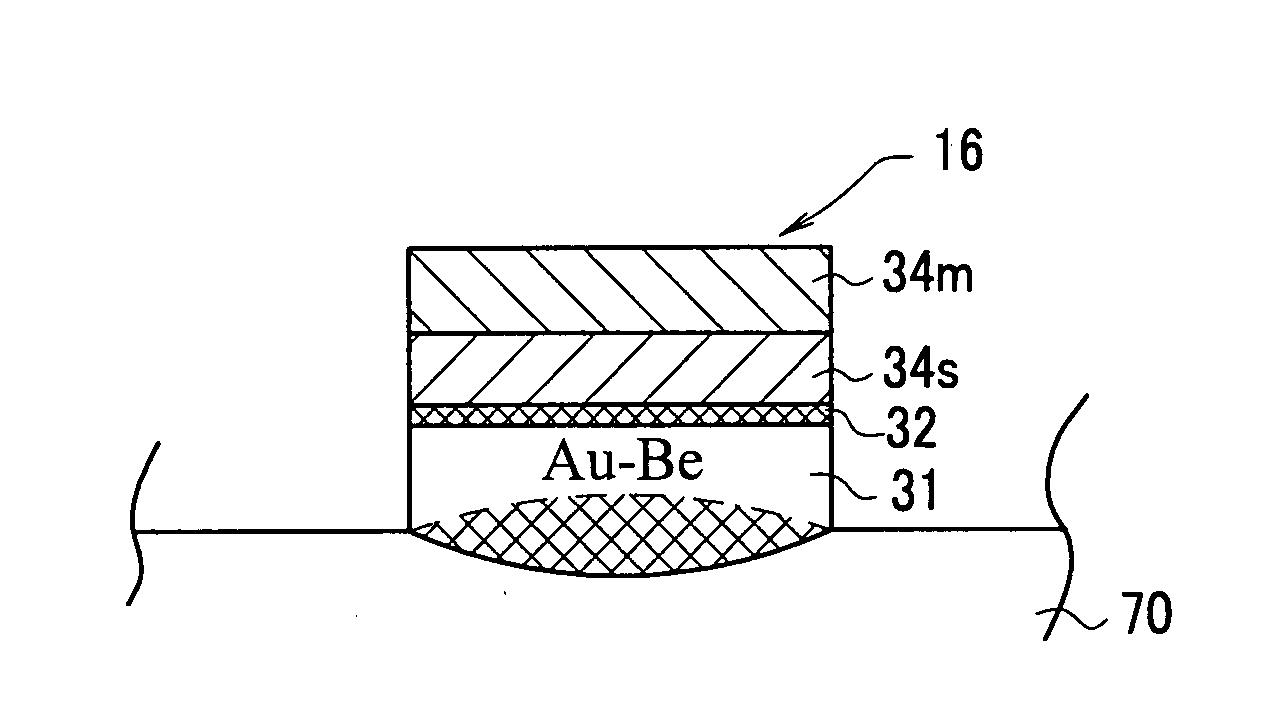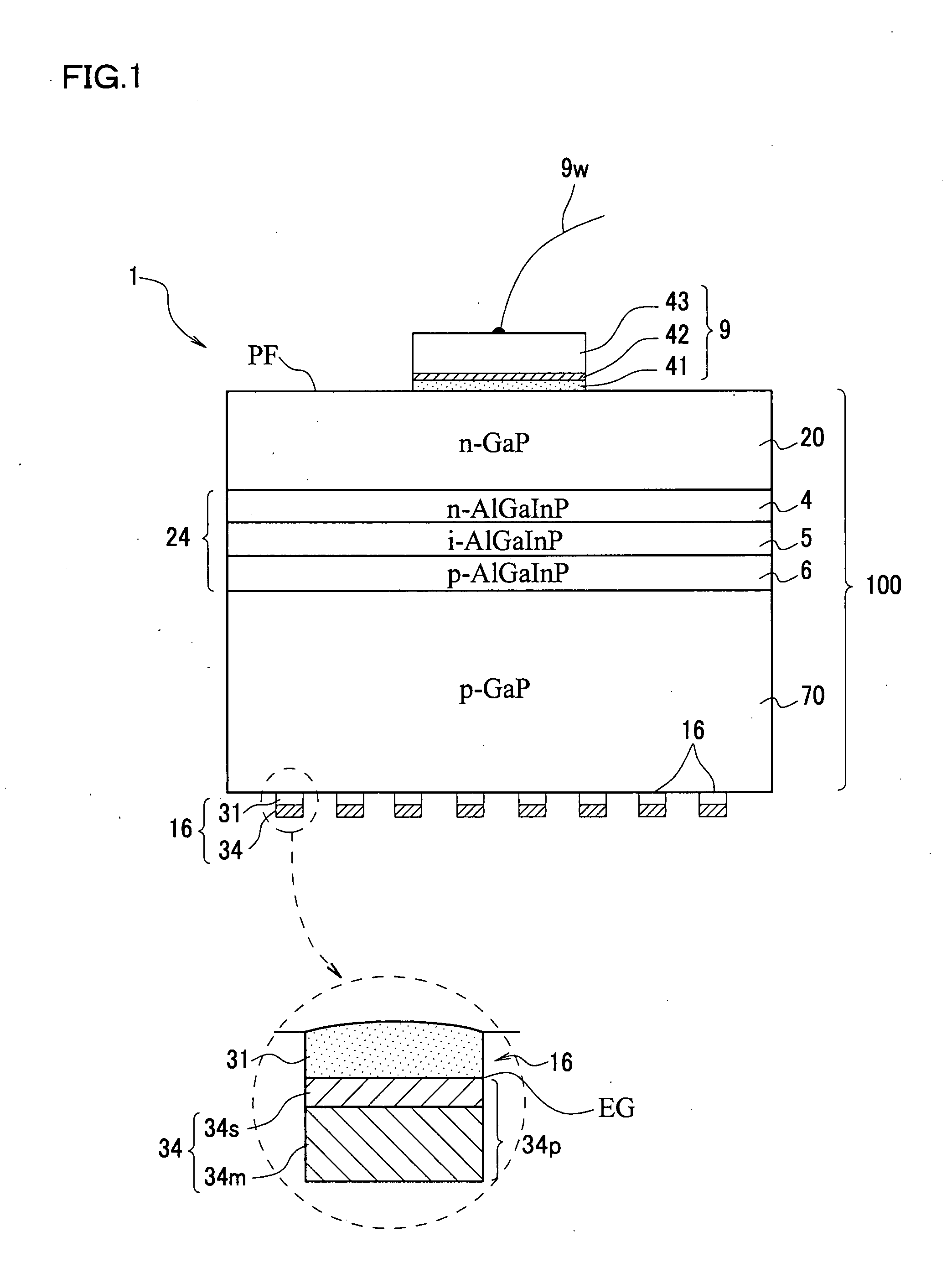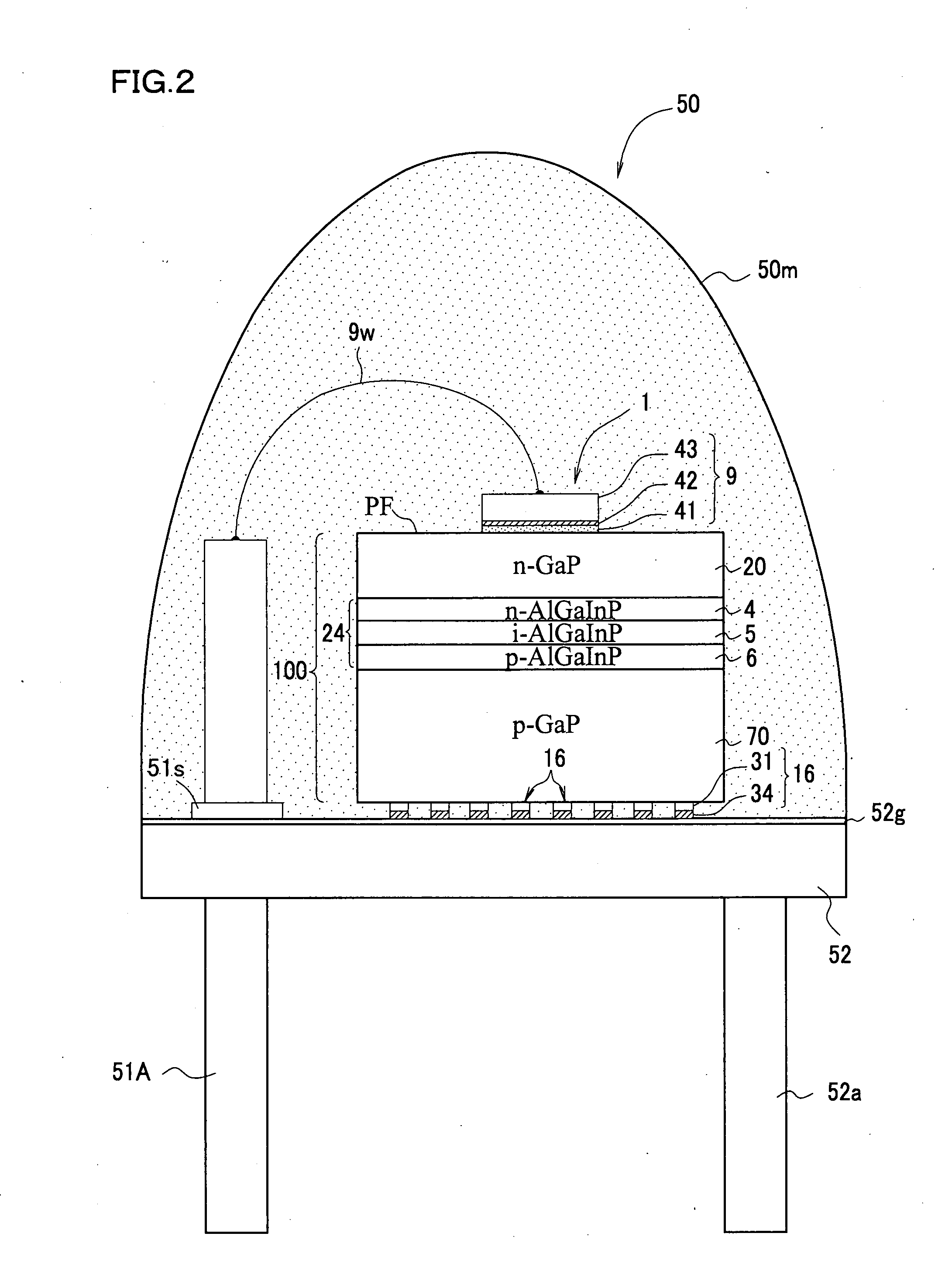Light Emitting Device and Method of Fabricating Light Emitting Device
a light emitting device and light-emitting technology, which is applied in the direction of manufacturing tools, soldering devices, and semiconductor/solid-state device details, etc., can solve the problem of inability to quickly solve the delamination problem of the au—sn-base solder layer, and achieve the effect of improving the light extraction efficiency, improving the corrosion resistance of the solder layer, and low reflectivity
- Summary
- Abstract
- Description
- Claims
- Application Information
AI Technical Summary
Benefits of technology
Problems solved by technology
Method used
Image
Examples
Embodiment Construction
[0047]Embodiments of the method of fabricating the light emitting device of this invention will be explained below, referring to the attached drawings. FIG. 1 is a schematic view showing light emitting device to be applied with this invention. The light emitting device 1 has a compound semiconductor layer 100 having therein a light emitting layer section 24, and while assuming the main surface of the compound semiconductor layer 100 positioned on the light extraction side as a first main surface, and the main surface opposite thereto as a second main surface, has a first electrode 9 formed on the first main surface, and has second electrodes 16 formed on the second main surface, respectively. Each of the second electrodes 16 has an alloyed contact layer 31 disposed in contact with the second main surface of the compound semiconductor layer 100, aimed at reducing contact resistance with the compound semiconductor layer 100, and a solder layer 34 connecting the alloyed contact layer 3...
PUM
| Property | Measurement | Unit |
|---|---|---|
| melting point | aaaaa | aaaaa |
| peak emission wavelength | aaaaa | aaaaa |
| temperature | aaaaa | aaaaa |
Abstract
Description
Claims
Application Information
 Login to View More
Login to View More - Generate Ideas
- Intellectual Property
- Life Sciences
- Materials
- Tech Scout
- Unparalleled Data Quality
- Higher Quality Content
- 60% Fewer Hallucinations
Browse by: Latest US Patents, China's latest patents, Technical Efficacy Thesaurus, Application Domain, Technology Topic, Popular Technical Reports.
© 2025 PatSnap. All rights reserved.Legal|Privacy policy|Modern Slavery Act Transparency Statement|Sitemap|About US| Contact US: help@patsnap.com



